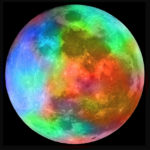 Every tradition that I know of has sacred days they observe and honor. There are many variations in observances under the large umbrella of Paganism; a good rule of thumb, though, is to look at the Solar and Lunar cycles as guides. The Lunar Cycle is 28.25(ish) days long and run from New Moon to Full Moon and back. The Solar Cycle is 365.25(ish) days, and has the Solstices at the extremes and the Equinoxes in the middle. Many currently practicing Pagan groups will also observe the cross-quarters (those dates that fall in between and Equinox and a Solstice). It gets a little weird when they then try to shoehorn those into the Gregorian Calendar. As an aside, there is a theory that a similar disconnect occurred with Judaism in early Rome, when the lunar months were shoehorned into the Republican calendar. Cross quarters are most often observed on 5/1, 8/1, 10/31, and 2/2. If you actually look at the astronomy, though, they should be observed around 5/5, 8/7, 11/7, and 2/4 (depending on the year).
Every tradition that I know of has sacred days they observe and honor. There are many variations in observances under the large umbrella of Paganism; a good rule of thumb, though, is to look at the Solar and Lunar cycles as guides. The Lunar Cycle is 28.25(ish) days long and run from New Moon to Full Moon and back. The Solar Cycle is 365.25(ish) days, and has the Solstices at the extremes and the Equinoxes in the middle. Many currently practicing Pagan groups will also observe the cross-quarters (those dates that fall in between and Equinox and a Solstice). It gets a little weird when they then try to shoehorn those into the Gregorian Calendar. As an aside, there is a theory that a similar disconnect occurred with Judaism in early Rome, when the lunar months were shoehorned into the Republican calendar. Cross quarters are most often observed on 5/1, 8/1, 10/31, and 2/2. If you actually look at the astronomy, though, they should be observed around 5/5, 8/7, 11/7, and 2/4 (depending on the year).
Here is a brief primer on the 2 astronomical cycles:
 Within the Lunar cycle, the waxing moon (the period between New and Full moon) is for growth and the waning moon (the period between Full Moon and Dark Moon) is for releasing
Within the Lunar cycle, the waxing moon (the period between New and Full moon) is for growth and the waning moon (the period between Full Moon and Dark Moon) is for releasing
Within the Solar cycle, the time from Winter Solstice to Summer Solstice is expansive and from Summer Solstice back to Winter Solstice is contractive
When we pay attention to the astronomical cycles, as well as our local seasonal cycles, and we sync our energies with nature, our lives flow much more smoothly. It does require paying attention, especially if you live in a city and don’t have as much immediate connection with nature. As we move through the pattern shifts that are occurring on the planet, we will weather the changes much more gracefully if we are already in sync with Mother Nature’s energies. If you aren’t used to paying attention to the world around you in this way, start a daily journal where you look at where the the Sun and the Moon are in their cycles, what season it appears to be (observation, not calendrical), and what the energy of the day seems to be, as well as where you are in your own energy cycle. The simple act of paying attention enough to document it will help you sync your energy to that of Nature, and you have the added bonus of being able to see trends over time.
Bless!